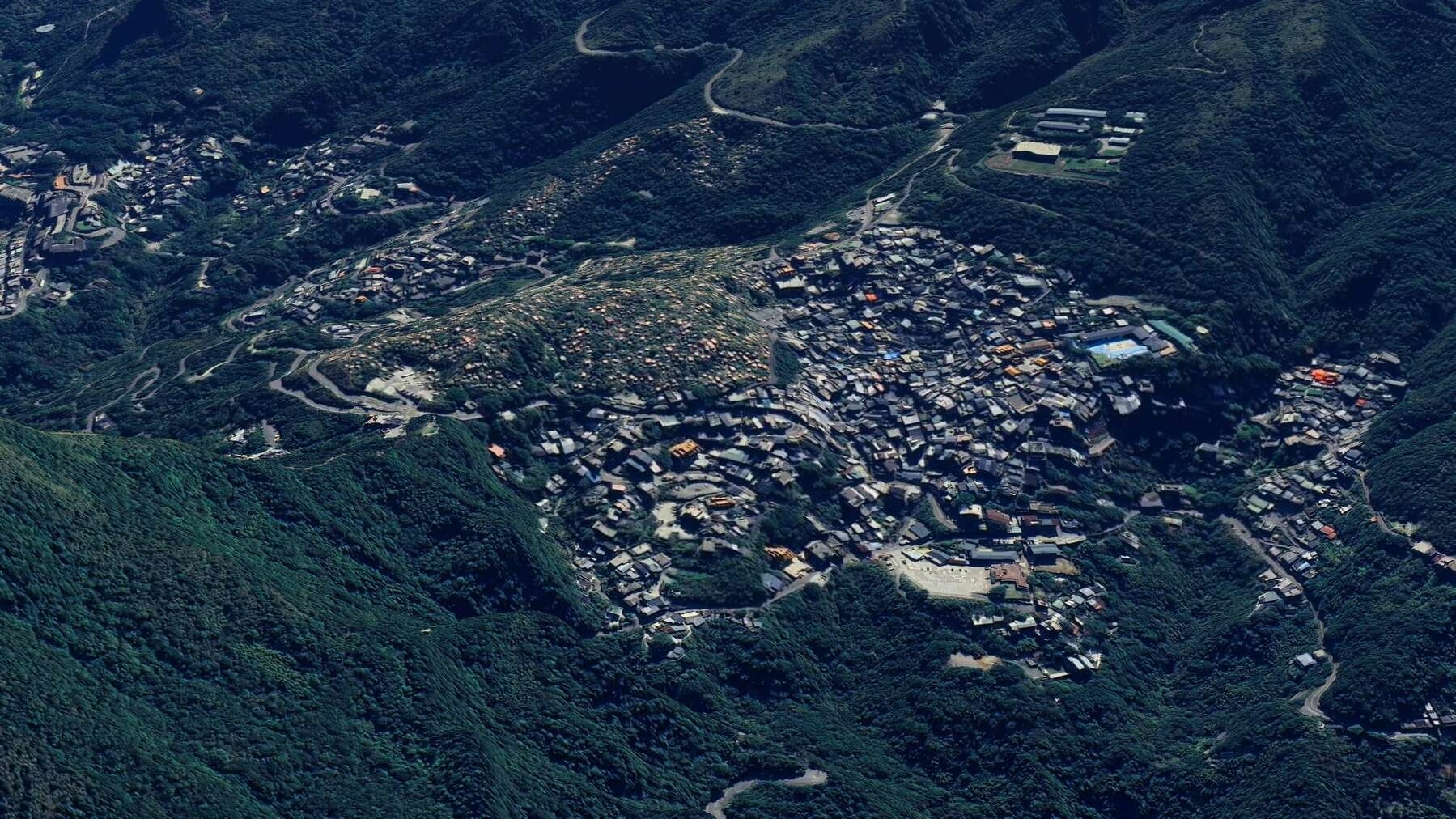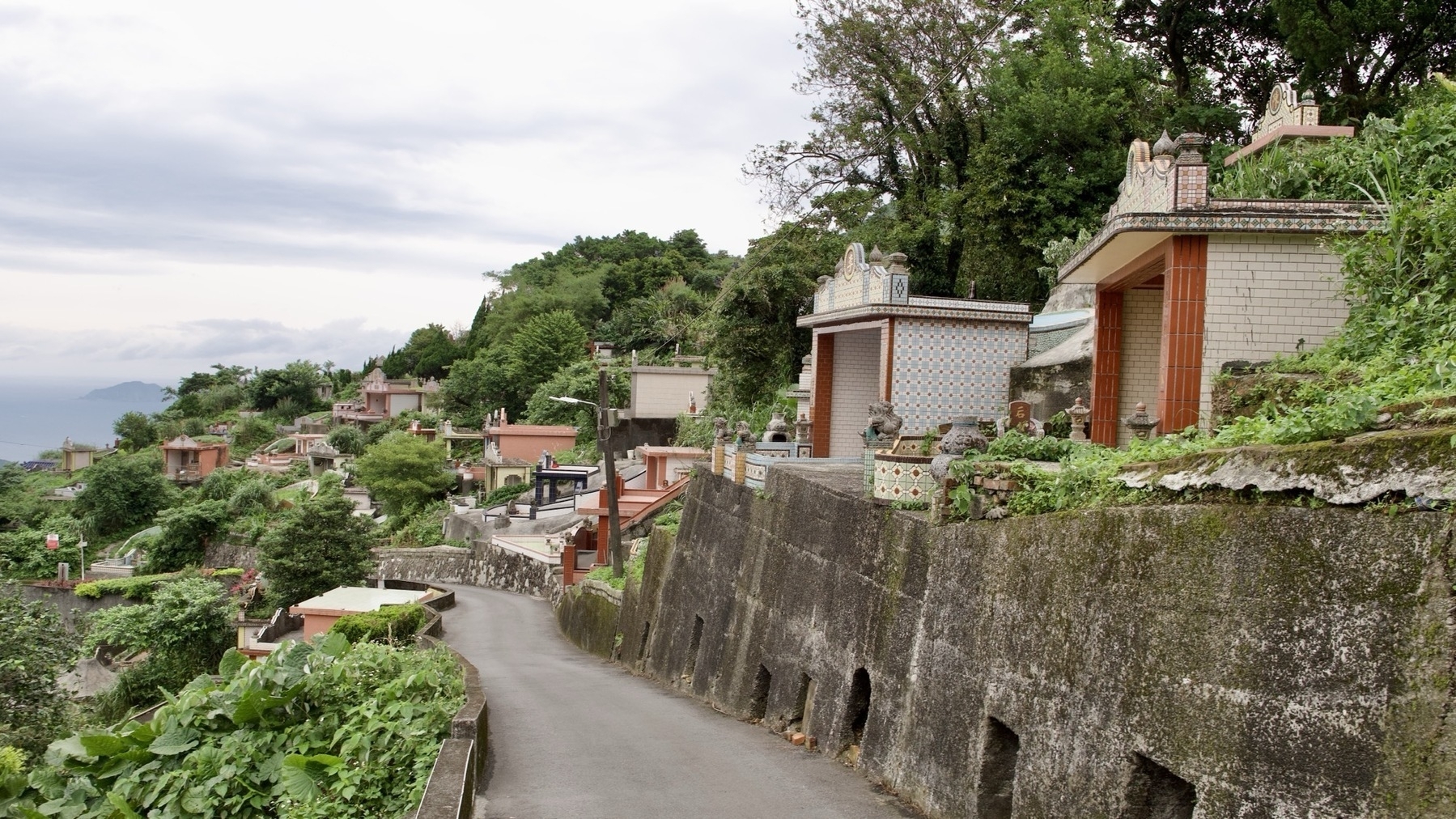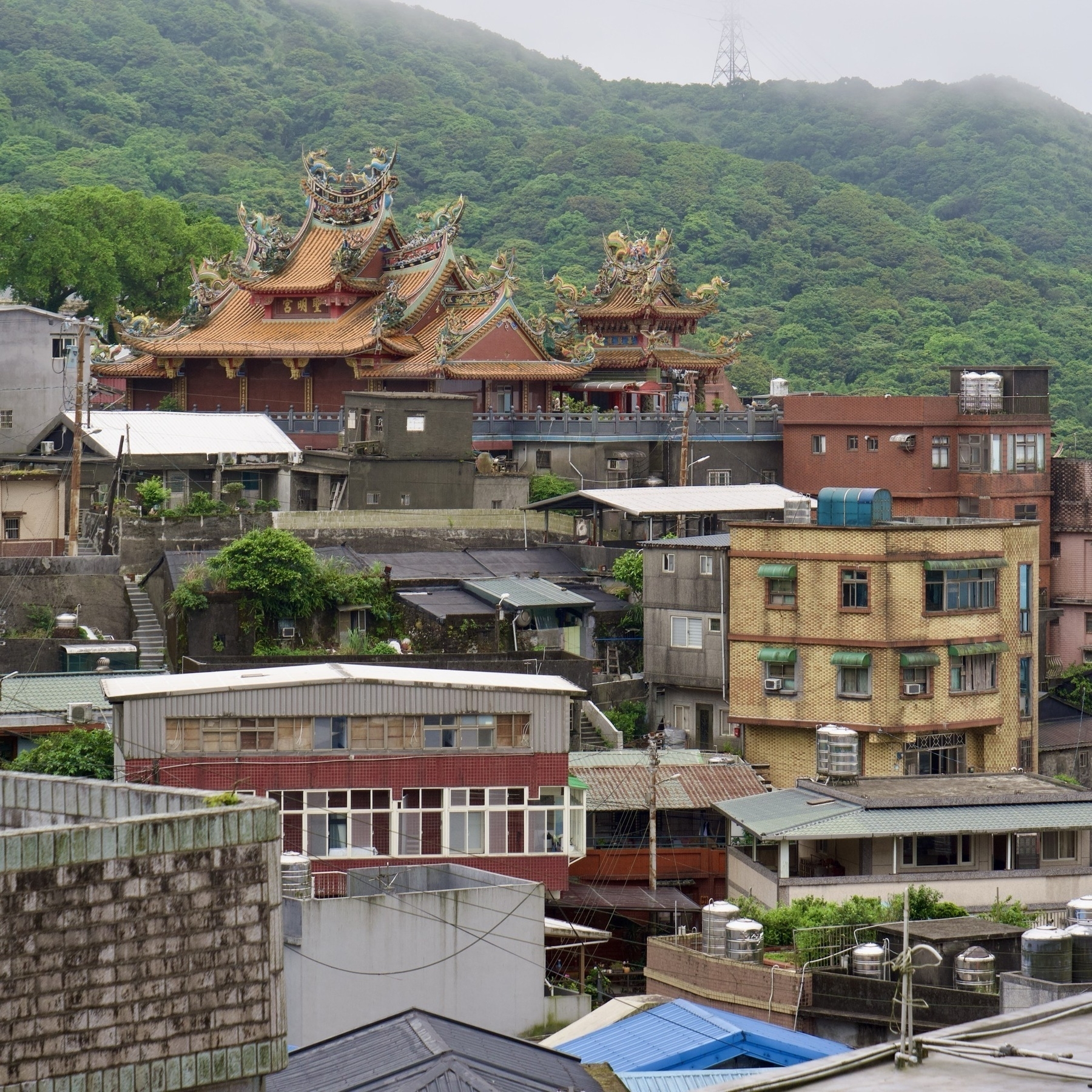Jiufen
This post is part of a series. See the introduction here →
 (see the whole album in full screen on Flickr here)
(see the whole album in full screen on Flickr here)
The gold rush at the turn of the 1900s caused a boom in the small mountain town of Jiufen, with its sweeping views of the sea towards both the northwest and northeast. The narrow road switches back upon itself numerous times as you climb up the rugged mountainside. Across the valley, deep in the forest (with no visible road to get there) is a monastery poking through the trees. Once you make it to the town the road narrows even more, hairpinning around houses almost stacked upon one another. Take care to drive slow as knots of tourists suddenly run across the road to take photos of the rolling green valley below, or spill out of souvenir shops and the covered “Old Street” full of shops selling everything from ocarina to stinky tofu.
Our driver took us to the top of the mountain, the far side of the town where we had a view of the valley below. Down the hill we saw the telltale shapes of the family grave sites, which sorta look like the ones you see in Okinawa (cultural connections!). In fact, when you look on a map, you realize that half the town is graves!

It was raining when we arrived. In fact, it rained almost the whole time we were in Jiufen. Our driver could not navigate through the narrow streets and called our B&B owner who retrieved us on a scooter. We followed him on foot wheeling our luggage down the steep road lined with graves.

A few switchbacks later we made it to the B&B and dropped our luggage. “How do we get to Old Street?” He just pointed “That way!” and we were off, picking our way between houses, down random-seeming stairways, passing stray cats. There were no people, but these were no roads. We were silent as ghosts, scared to wake anyone. As long as we were heading down we knew it was the right way. Soon we came upon a narrow stairwell between two buildings leading down to a river of tourists flowing left and right in the covered shopping street.
Jiufen Old Street greeted us with the loud sounds and colours and smells of a crowded shopping area. Following the flow we branched off, stopping in a restaurant eddy where I had my first Vegetarian Red Vinasse Taiwanese Meatball. Continuing on were shoe stores and tea shops and every kind of knick-knack you can imagine, all hauled up to the top of this mountain to be sold to visitors who hauled themselves up here to buy.
But why? One reason, at least for the Japanese, is the A-Mei Teahouse, a distinctive building that has been said to be one of the inspirations for the bathhouse in Spirited Away (though Miyazaki denies this, and there are a number of onsen in Japan itself which claim this title). The souvenir shops cashed in with all sorts of Totoro and Ponyo and other Ghibli goods. The guy in the ocarina shop playing Joe Hisaishi tunes was actually pretty talented!
We took photos in front of the A-Mei Teahouse, and with a statue commemorating the gold miners in front of the building, but we took refuge in another teahouse further down the street, one with a fantastic view of the valley. This was my first Chinese tea experience. Not quite the same as cha-no-yū, but still with a recognizable level of ritual. The gentle spa music lent to the relaxing atmosphere as we drank cup after tiny cup of the smooth tea, watching the wind blow clouds up and over the mountain ridge above us. I recalled one of the one-stroke calligraphy pieces by Master Hsing Yun, the founder of Fo Guang Shan: Your mind a mountain, letting the clouds pass by.

It started to rain again so we huffed up, up, up! Stairwell after stairwell we got progressively more soaked as we poorly navigated the maze back to our lodgings. Once back it was straight into a hot shower to ward off any sickness. Later, my wife and I walked back down and had a browse, picking up some dinner to eat back in the room. After dark we climbed up yet more narrow stairs to the roof of our B&B to take in some night views.
Waking early the next morning it was back down to Old Street before breakfast. The whole scene was very different: shutters closed, the street empty of tourists. Where yesterday there were throngs of people, now vans and trucks drove with their headlights on and barely enough clearance on either side. The narrow one-way street meant we had the pleasure of experiencing Jiufen’s daily morning traffic jam: each vehicle forced to park for long minutes as the vehicle in front finished its job of loading garbage or dirty hotel sheets, or dropping off a batch of tofu ready to be steeped in the stinky broth for the day’s sales. It was kinda like the feeling when you leave your hotel in the morning and the cleaning staff is getting to work, the mystery of the night before gone.
We stopped in the Family Mart for a little coffee and morning snack. At the back of the convenience store was a seating area with large windows, overhanging the cliff. Probably the best view from a convenience store I have ever seen. After breakfast we hiked back up to the top of the mountain and took in some more views. As I was photographing the valley we could hear the distant sound of drums, the popping of firecrackers, and see the occasional firework launched high into the air below us. May 1st.
Before noon we caught a taxi for the 45 minute drive back to modern Taipei, which is where we will pick up the story next time! 🚕